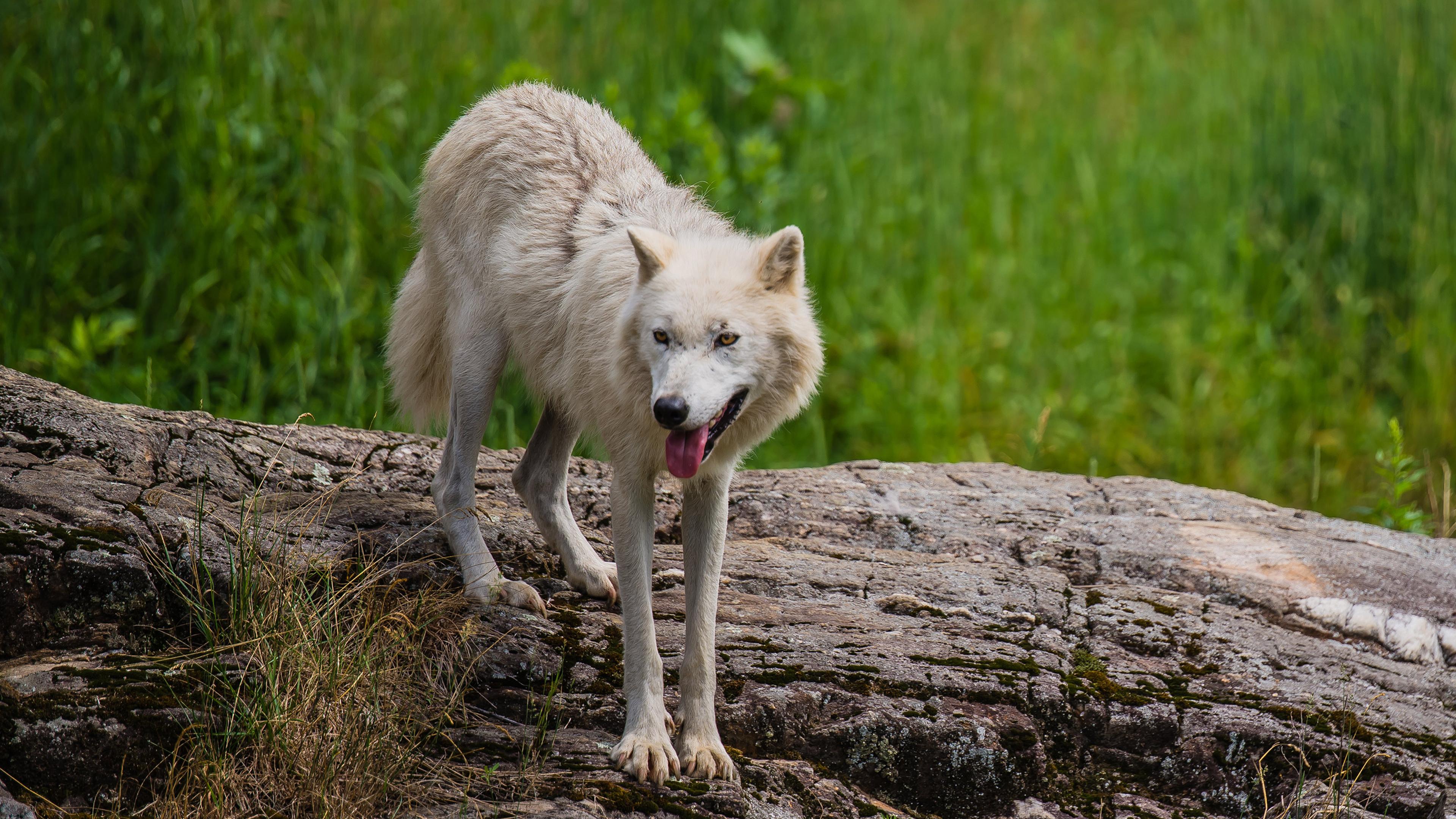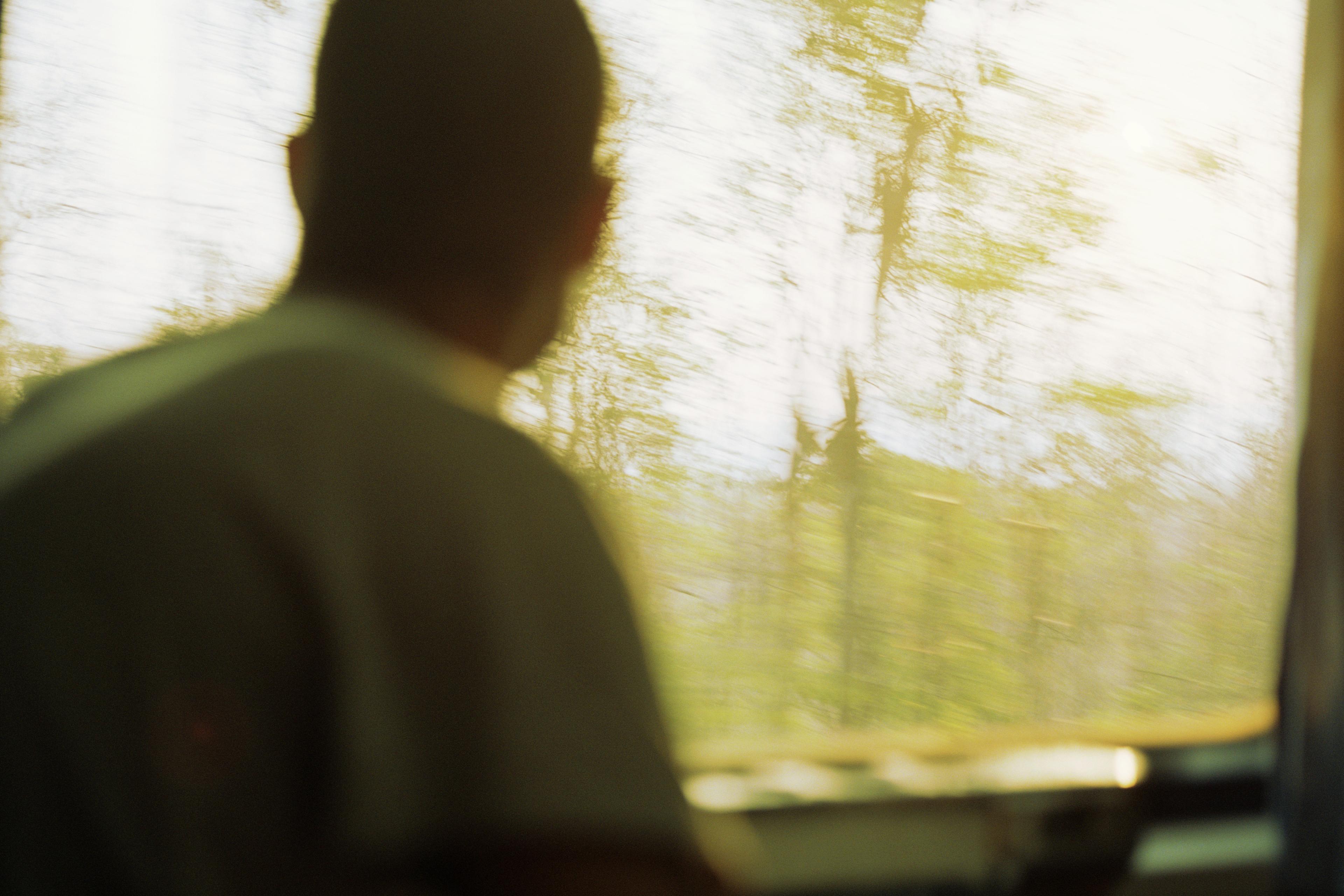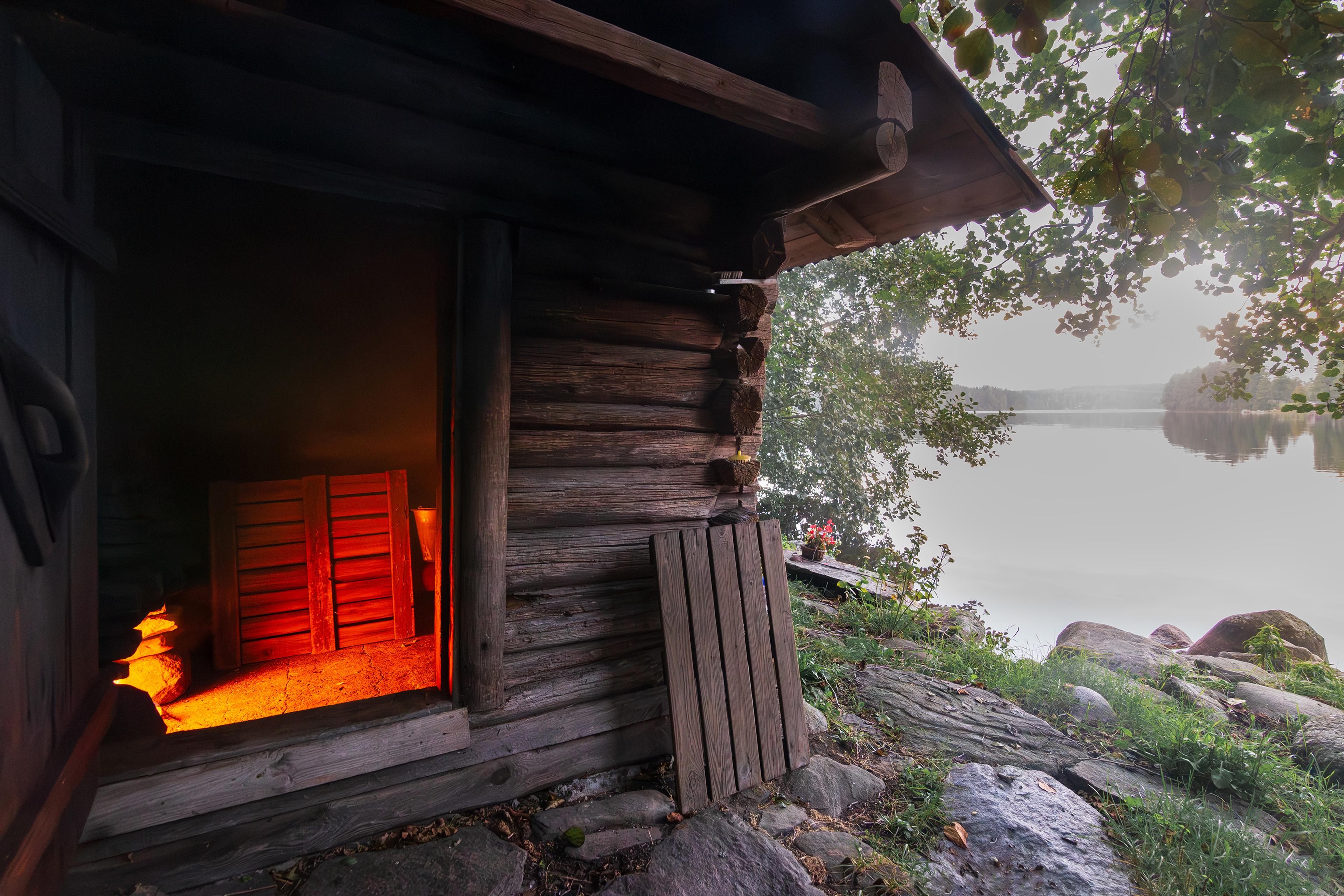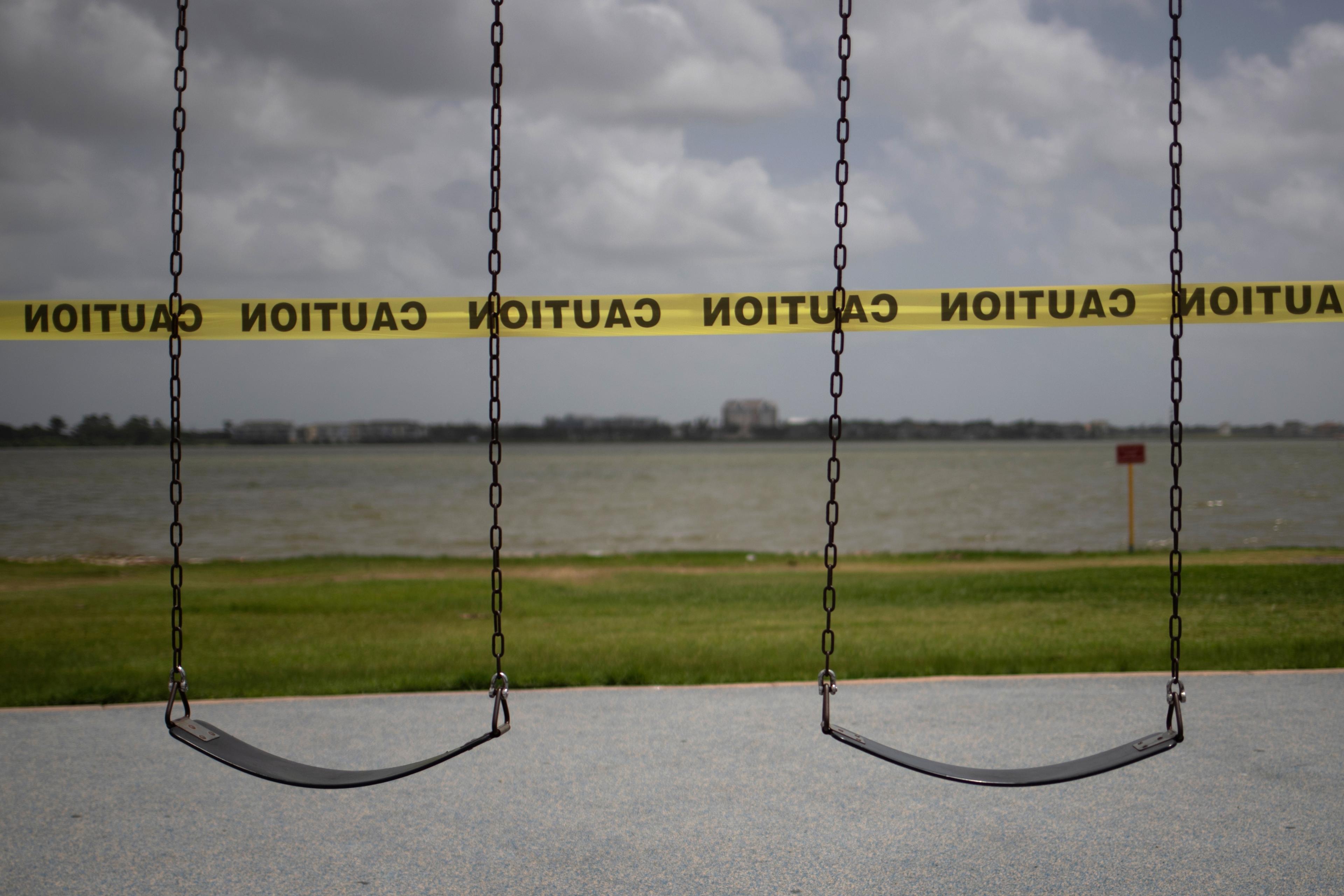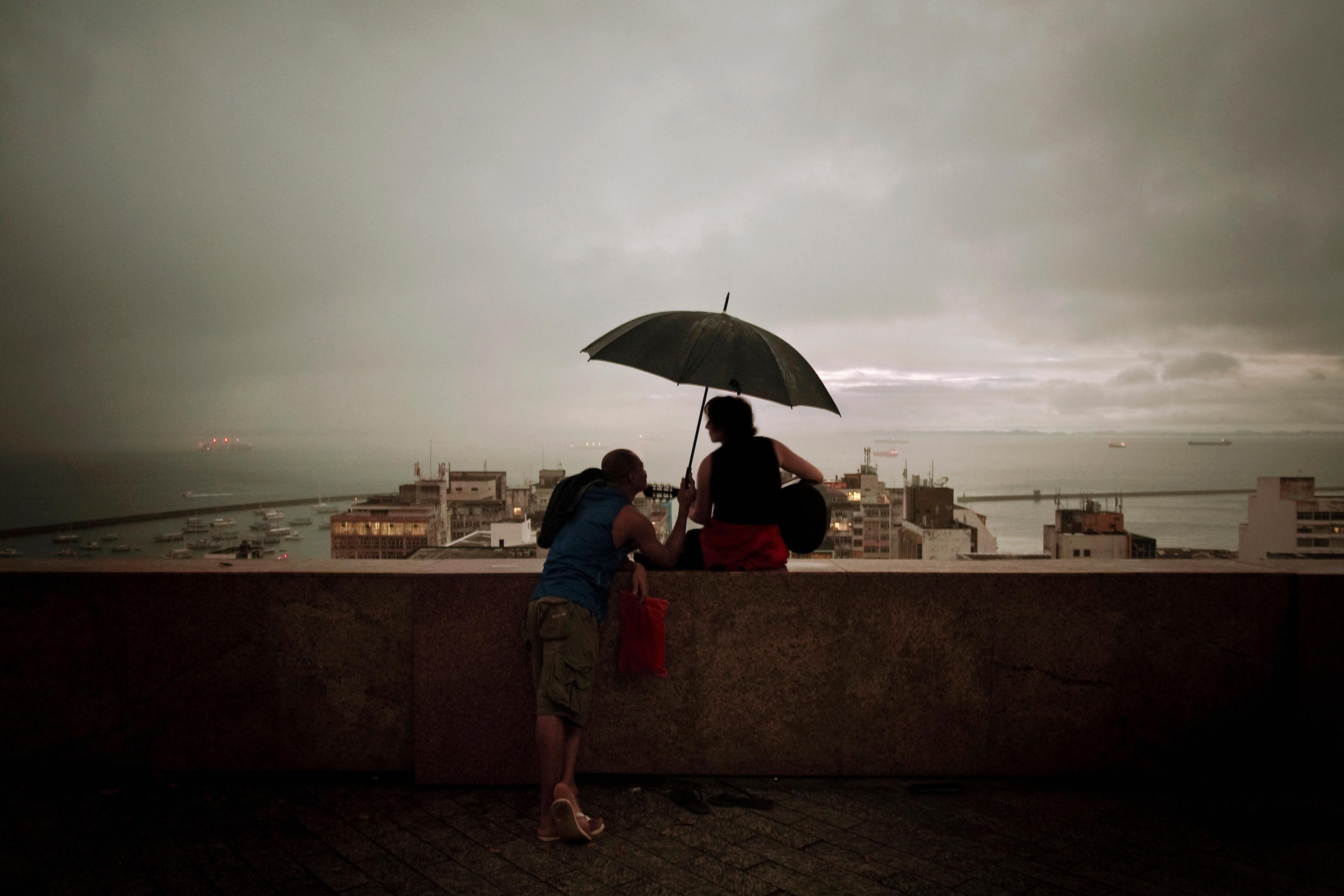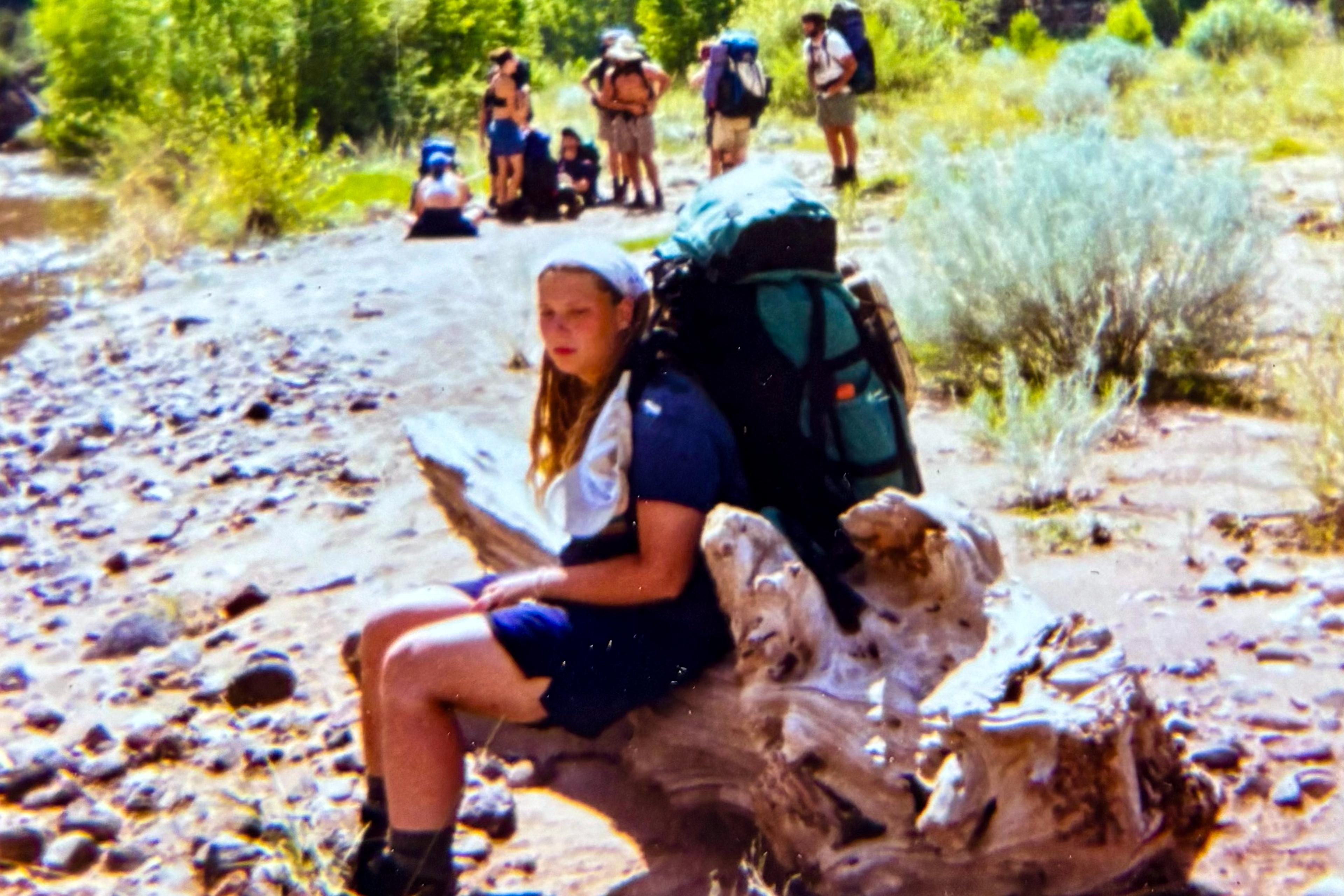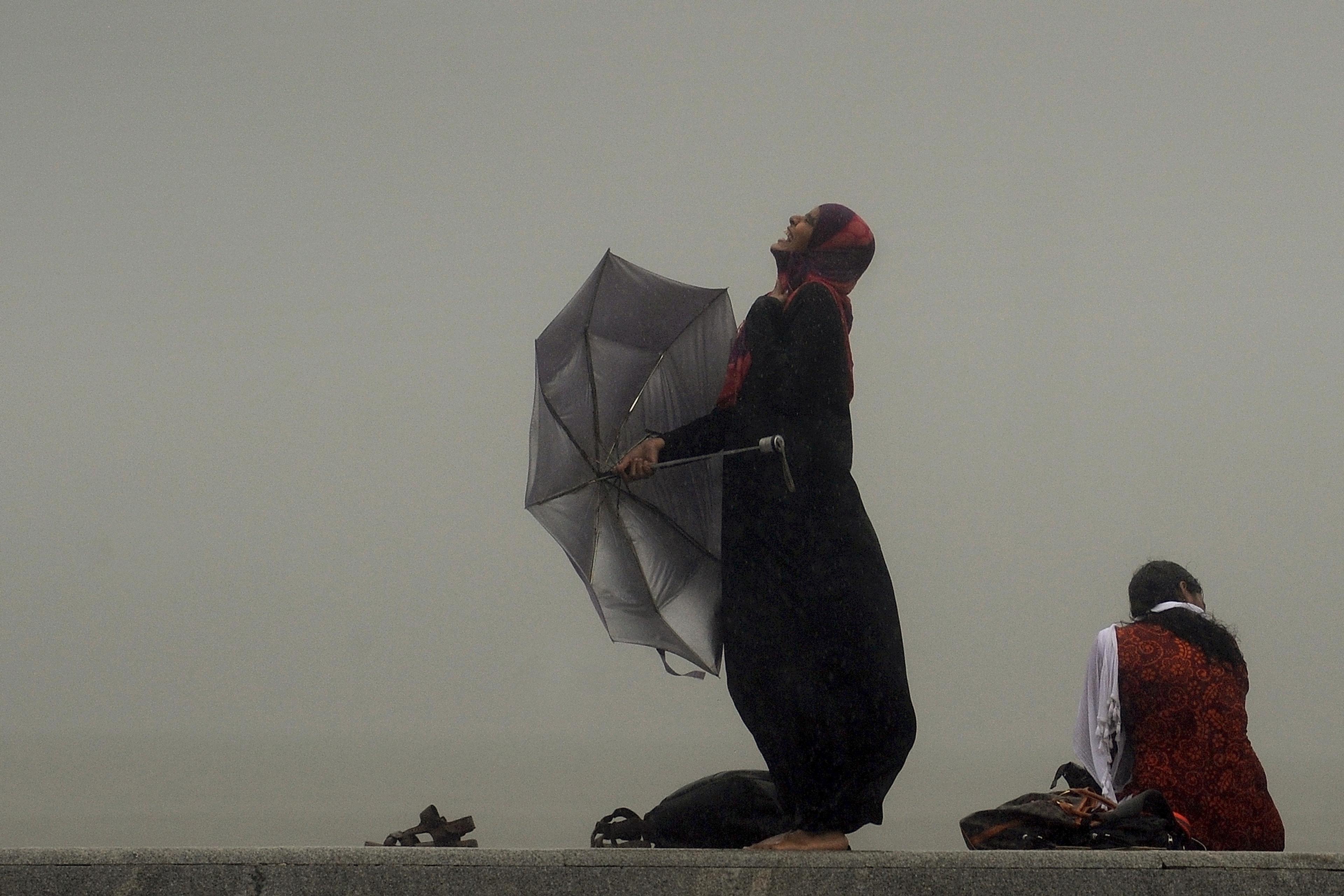Some years ago, I came upon a white wolf. Or rather, she came upon me, as I was dozing on a riverbank on Ellesmere Island in the Canadian High Arctic. Allow me to set the scene. Ellesmere – or Umingmak Nuna, ‘land of muskoxen’ in Inuktitut – is about the same size as Great Britain, with a permanent population of around 150 humans and 200 wolves. Most of the island lies north of the geomagnetic North Pole and is wholly north of the Northwest Passage. The average annual temperature is -16°C (3.2°F), plunging to -56.2°C (-69.2°F) one record winter. At such a low temperature, a thrown cup of coffee freezes before it hits the ground. It’s an unforgiving terrain.
The mainly Inuit residents are concentrated in the tiny settlement of Grise Fiord or Aujuittuq, ‘the place that never thaws’. And it never did thaw in the 1950s, when the Canadian government forcibly removed 19 families from the East Hudson Bay to the High Arctic to strengthen Canada’s claim to sovereignty over the territory. In 2004, when I visited, global warming had already taken hold and the thin, seasonal ice was melting earlier.
I’d arrived on Umingmak Nuna to research my book about the forced relocations, The Long Exile (2006). I was one of the only 50 or so visitors that year, the majority of whom were polar scientists working at the island’s two meteorological stations, Eureka and Alert. I had arranged to stay with an Inuit family, who were hospitable, laughed when I showed them the clothes I’d brought for the trip, and promptly found me some sealskin mitts, a down parka and a guide who was willing to take me out on the sea ice.
By the second weekend in the settlement, the weather had warmed and the majority of Inuit had moved to their hunting and fishing camps, leaving only a few, mostly white, people (or qallunaat) in the settlement. One of these, a nurse with a good line in dry repartee (‘seal meat is basically fish soap without the bubbles’) had invited me to spend the weekend with her, but she ended up having to fly out on one of the tiny biweekly supply planes to attend to a family emergency, leaving me alone.
The island is a treacherous morass of ankle-spraining rocky scree, frozen tundra and ice-filled crevasse
Back then, I was more reckless with my body than I am today. I now put this down partly to youth and partly to a remnant of some childhood trauma. It had taken a lot to reach Aujuittuq: I’d had to fly to the polar expedition base at Resolute, on Cornwallis Island, then cadge a spot on one of the small planes that brought in cargo and occasionally transported passengers. Determined to make the most of my stay, I put some food and a vacuum flask of tea in a small daypack, pulled on my borrowed garb and headed out.
It is hard to convey how stupid this was. While out on the sea ice a few days earlier with an Inuit guide, Tom, we’d spotted a polar bear, and on another occasion we’d been forced to hide behind a rock to save ourselves from a muskox threatening to stampede. Tom knew the terrain and its wildlife, and he carried a rifle. I had no experience of travelling in Arctic conditions. The island is a treacherous morass of ankle-spraining rocky scree, frozen tundra and ice-filled crevasse. Back then, there was no mobile signal, and no compass gives a reliable reading north of the geomagnetic North Pole. Blizzards and whiteouts are common year-round. I knew all this. And still.
In my work as a psychotherapist, I often encounter clients who find it hard to make sense of themselves, appealing to rationality as a defence against the rawness of emotion: the bereaved person who tries to reason their way out of loss; the depressive who hopes to ‘cure’ their depression by reminding themselves that they’re not starving and don’t have cancer. The fact that feelings, emotions and affect are rarely subject to rationality or even reasonableness is not to say they don’t make sense and have no meaning. Or that rationality can play no part in therapy. Emotions are complex biosocial, psychological and even spiritual reactions to our past and current environments. As Simone de Beauvoir said, everyone exists in context.
The work of psychotherapy is, in part, to bring this reactivity into awareness, to assign meaning to our feelings so that we may better understand them, and to reshape our emotional landscape in accordance with our values in a way that better serves our lives.
My decision to take off alone was driven, I see now, by what Sigmund Freud calls repetition compulsion: an unconscious process of seeking out danger in order to prove to myself that I could survive it. My recklessness was tempered by rationality. I figured that, if I followed what appeared to be a small river to the west of Grise Fiord as it snaked away across the rocky hinterland, I was less likely to get lost. And so I walked, which was hard going. In sheltered spots, the ice still clutched implacably at the rocky substrate and, where the tundra was exposed to the full glare of the midnight sun, the ground had become a hummocky bog.
I alone was responsible for the situation and I alone was responsible for surviving it
After several hours, I stopped on a gravelly patch of the river bank, planning to eat and head back but, on finishing my picnic, I suddenly lost all energy and felt completely spent. I closed my eyes and sleep arrived quickly. When I came to, I saw a white wolf bitch staring at me. She stood not 10 feet away, her cub behind her. My heart began to kick. A pair of ravens settled on a nearby rock. Maybe the wolf had been drawn by the remnants of my picnic, maybe by curiosity or by something more sinister. White wolves, a sub-species of the more common grey wolf, are native to Umingmak Nuna. Because they have never been hunted, they are unafraid of human beings. Wolf attacks are rare but not unknown on the island. Slowly, I propped myself up on my elbows and did my best to quell a rising panic.
What I saw was a thin creature with a stained and raggedy coat. I felt her vulnerability as keenly as my own. Time slowed. Adrenaline kicked in and kept me distant from my fear. The creature’s head bobbed as she took me in. I’d like to say that some wordless interspecies communication passed between us in that moment or that some inner wisdom stirred in me, or that I learned something profound about the wolf, or about wildness or myself, or that the myriad myths about she-wolves appeared to me in a new light. What I did sense fully and for the first time was the simple reality of my being an element in nature, just as the wolf was an element, or the river, or the tundra plants; mutable parts of a complex dynamic system that afforded me no special status or meaning. It was humbling to be confronted by the stark realisation that I alone was responsible for the situation in which I found myself and I alone was responsible for surviving it.
I scanned the riverbank for a rock small enough to throw and large enough to be deadly, and weighed the odds of killing the wolf if she came at me. The words of the great comic Oliver Hardy came to mind: ‘Well, here’s another nice mess you’ve gotten me into.’
An indeterminate amount of time passed. The ravens took flight. Eventually, the she-wolf turned and trotted away, with her cub following close behind. I waited until they grew indistinguishable from the tundra. I got up. I walked back along the river and to the safety of the settlement.
Humans are meaning-making creatures. Existentialists call the paradox of struggling to make meaning in a universe that has none ‘the absurd’. Engaging fully in this struggle is sometimes itself the meaning. As the writer Albert Camus observes, in the Sisyphean task of rolling a rock up a hill only to have it roll back down, one can find an aliveness to the present moment, even a quiet joy. The hero’s journey can be as simple as getting on with the day. Jean-Paul Sartre coined the term ‘bad faith’ to describe living as if one were not free, within the constraints of circumstance, to make meaningful choices. This can result in inauthenticity or a sense of victimhood and stuckness. In Man’s Search for Meaning (1946), the Holocaust survivor Viktor Frankl wrote: ‘[E]verything can be taken from a man but one thing: the last of the human freedoms – to choose one’s attitude in any given set of circumstances, to choose one’s own way.’
I often think about that wolf and her cub, doubtless both long since dead. Reflecting on what was and what could have been has helped me to grasp what the writer Milan Kundera calls ‘the unbearable lightness of being’, the freedom to be had in life’s fleetingness and the weighty responsibility to live it mindfully and with meaning.
The clients who come into my therapy practice have often shown tremendous resilience and courage in difficult circumstances. They’ve had to weigh up the rocks on the riverbank. They’ve occasionally had to kill parts of themselves or be killed. They are sometimes psychologically starving. The responsibility of making meaning from the past and forging a future in which it’s possible to live in ‘good faith’ with their choices and values may seem as fraught with danger as picking a path through a terrain of hummocky bogs, rocky crevasses and hostile wildlife. And yet they show up to do just that. To have the courage to accept this challenge is to engage with the fundamental truth of human vulnerability. To embrace the reality of freedom, even in the most constrained of circumstances, is to discover in the psyche a spaciousness and humility from which liberatory movement begins.
